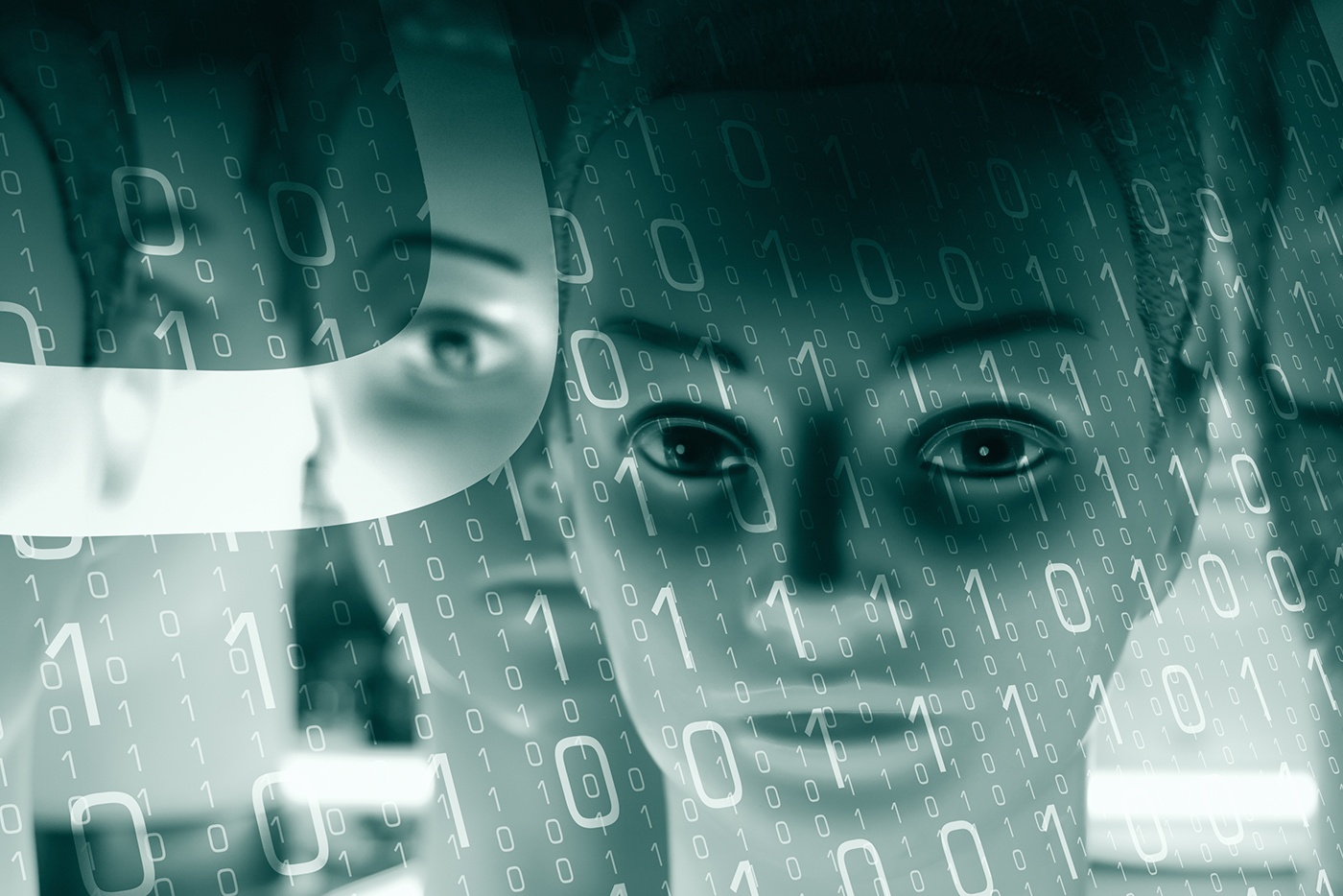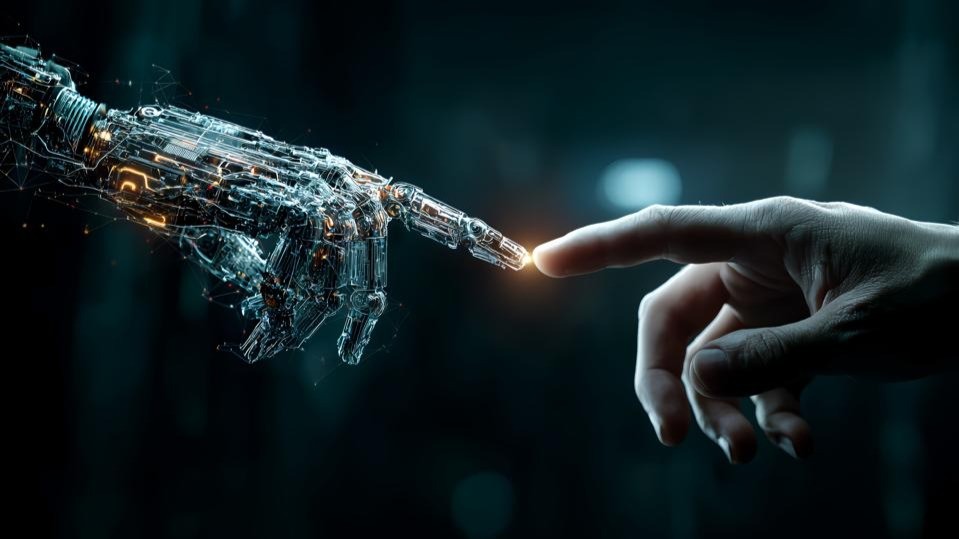The 10 Scariest Future Tech Trends Everyone Must Know About Right Now
31 January 2023
There is some incredible emerging tech on the horizon for 2023, but there are also some dangerous and worrying advances that should be on your radar. This emerging tech could have huge implications for the human race.
After all, we applaud scientific progress, but it’s important for us to monitor how some of these technologies are being used. Some breakthroughs can easily be abused or used in dangerous or scary ways.
Let’s take a look at the scariest tech trends everyone should know about today.

1. AI Singularity
In many aspects, artificial intelligence is becoming capable of human-level thinking. “AI singularity” is a hypothetical point in the future where AI becomes smarter than humans, but I would argue that, in some ways, we've already reached that tipping point.
We now have extremely powerful AI algorithms that can outperform people on many levels — and this will have an enormous impact on jobs.
Experts predict that 80 to 90% of all the current jobs in the world will be augmented by AI, and many will even become completely obsolete. We must think about how to prepare for this shift and be able to change gears to do the work that only humans are capable of doing.
For more information on preparing for the workplace of the future and how to successfully work alongside AI, check out my book Future Skills: The 20 Skills and Competencies Everyone Needs to Succeed in a Digital World.
2. Editable Humans
Thanks to CRISPR-Cas9 technology, we have the ability to change inheritable genes in plants, animals, and our own human bodies. Gene editing has incredible benefits, as it can help us fight disease, fix genetic mutations that cause devastating illnesses, eliminate food allergies, and ensure we have enough food to feed the planet.
For example, scientists are experimenting with a method for fixing a gene mutation that causes Duchenne Muscular Dystrophy – a devastating condition that results in early death. Experiments on CRISPR in mice and dogs show promise and may lead to viable human treatments for Duchenne Muscular Dystrophy.
On the other hand, there are many concerns about the idea of changing inheritable genes forever. With CRISPR, we have the ability to manipulate genes that will get permanently incorporated into the genome and get passed on from generation to generation.
Many countries, including most of Europe, have banned germline editing because its implications are not yet fully understood — but germline editing is still legal in China and the United States. Look for more public discussion on the implications and ethics of this technology.
3. Merging of Humans and Machines
In many ways, we’re already seeing a merge of humans and machines. When someone has an accident and loses a limb, we can replace that limb with a prosthetic. We can also improve people’s vision with contact lenses, or even give them “super” vision or night vision using technology.
But what if this technology goes too far? The U.S. military has already created exoskeletons that seemingly give soldiers superpowers. Scientists are also working on interfaces that will potentially give us AI capabilities that fully merge humans with machines. Some companies have announced plans to develop brain-computer interfaces that can read minds.
The concern is that this technology will potentially be abused, creating a Terminator vision of the future.
4. The Ability to Print Anything
3D printing technology allows us to create practically any 3D object, but this capability can also be used in harmful ways. As 3D printers become more affordable and ubiquitous, it will be harder to control the printing of weapons, including guns, because anyone can download an algorithm and “print” whatever they want, right in their home.
Regulation and tracking of 3D-printed guns are difficult because there are no serial numbers on these weapons, so they represent a growing threat. In October, British police made a large seizure of 3D-printed firearm components, in a suspected makeshift firearms factory in London.
The fear is that extremists and criminals will get their hands on these unregulated guns as they move into the mainstream.
5. Quantum Computing
Quantum computers are innovative machines that will be able to give us computing power that is potentially a trillion times more powerful than the supercomputers we have today.
This can have enormous benefits, but quantum computing will also enable hackers to get around our traditional security systems and break into practically anything. Currently, we use advanced encryption to protect our personal, military, and commercial data — but quantum computers will be able to break right through this encryption.
Corporations and governments are starting to take this threat seriously and are putting resources into "post-quantum encryption" that will protect our most sensitive data.
6. Autonomous Smart Robots
As robots become more intelligent and autonomous, they’ll be able to replace humans in many job settings. Autonomous robots can make their own decisions based on the information in the environment, then perform actions accordingly.
We already have self-driving cars as well as robots that flip burgers, work in factories, pick grocery orders, make our coffee, and serve us food.
Just like with AI, we’ll need to think about how we can retrain and reskill our workforce as people in certain roles are replaced by these autonomous smart robots.
7. Killer Drones
Think this one’s farfetched? Think again.
Drones that work together in groups — with the help of AI — can already identify, track, and destroy targets.
At China’s Zhejiang University, scientists have developed a drone swarm capable of tracking humans through dense bamboo forests without human guidance.
Halcon, a subsidiary of UAE’s Edge Group, recently unveiled a swarming drone system known as Hunter 2-S that can share information for tracking and engaging with targets.
Drones are seen as a cost-effective way to overwhelm defenses without needing to put soldiers in harm’s way — and the implications of this type of technology are quite scary.
8. Digital Surveillance
In our increasingly digitized world, we can track nearly everything. Companies are tracking workers’ keystrokes, and police departments are using facial recognition to monitor people’s actions and movements.
This type of digital surveillance poses a threat to human rights, and opens the door to enormous potential abuse.
The United Nations (UN) has publicly condemned arbitrary and unlawful digital surveillance as an infringement on human rights. David Kaye, the UN Special Rapporteur on Freedom of Opinion and Expression, called for a moratorium on the global sales and transfer of digital surveillance tools until we can put legal policies in place to hold organizations and governments accountable for how these tools are being used.
9. Deep Fakes in the Metaverse
While there are a number of beneficial uses for deepfake technology — like recreating historical figures for educational environments or bringing AI-enabled, synthetic media accessibility tools to people who need them — malicious use of this technology is a concern.
Deepfakes can be used to create images and videos of anyone, including celebrities, politicians, or technology leaders, and could be used to support any agenda. Deepfakes have gotten so good that it is hard to tell the difference between real footage and digital fakes.
And as we enter the metaverse and spend more time in the virtual world, we’ll need ways to verify our identity so our interactions with others are protected and safe.
10. Nanobots
Scientists have developed nanobots — tiny robots at nanoscale — that can enter our bloodstream and even bypass the blood-brain barrier.
This technology has enormous potential benefits for things like taking samples, collecting and transmitting data, and drug delivery — but the potential for abuse is also high. In the future, nanobots may even be used to transmit human thought.
Weaponized nanobots could kill a specific person or group of people, or even rewrite their memories so they turn against their own side. There are also serious privacy concerns in our modern world of highly-connected devices. What protects our medical data and our thoughts, in the world of nanobots? Strong regulation and oversight are necessary to provide transparency and prevent these problems.
Related Articles
Is Autonomous Driving Ever Going To Happen?
By now, “smart” versions exist of just about every home appliance, gadget and gizmos we can think of. However, manufacturers continue[...]
AI And The End Of Progress? Why Innovation May Be More Fragile Than We Think
By now, “smart” versions exist of just about every home appliance, gadget and gizmos we can think of. However, manufacturers continue[...]
Dreamforce 2025: Why I’m Excited About Salesforce’s Agentic Enterprise Revolution
By now, “smart” versions exist of just about every home appliance, gadget and gizmos we can think of. However, manufacturers continue[...]
The Top 5 Technology Trends For 2026
By now, “smart” versions exist of just about every home appliance, gadget and gizmos we can think of. However, manufacturers continue[...]
The 7 Biggest Cyber Security Trends Of 2026 That Everyone Must Be Ready For
By now, “smart” versions exist of just about every home appliance, gadget and gizmos we can think of. However, manufacturers continue[...]
The 4 Myths Holding Back The AI Revolution, According To Nokia Bell Labs
By now, “smart” versions exist of just about every home appliance, gadget and gizmos we can think of. However, manufacturers continue[...]
Sign up to Stay in Touch!
Bernard Marr is a world-renowned futurist, influencer and thought leader in the fields of business and technology, with a passion for using technology for the good of humanity.
He is a best-selling author of over 20 books, writes a regular column for Forbes and advises and coaches many of the world’s best-known organisations.
He has a combined following of 4 million people across his social media channels and newsletters and was ranked by LinkedIn as one of the top 5 business influencers in the world.
Bernard’s latest book is ‘Generative AI in Practice’.










Social Media